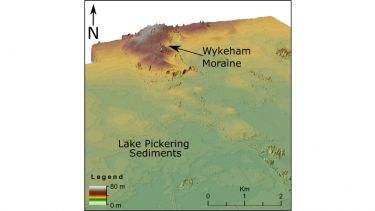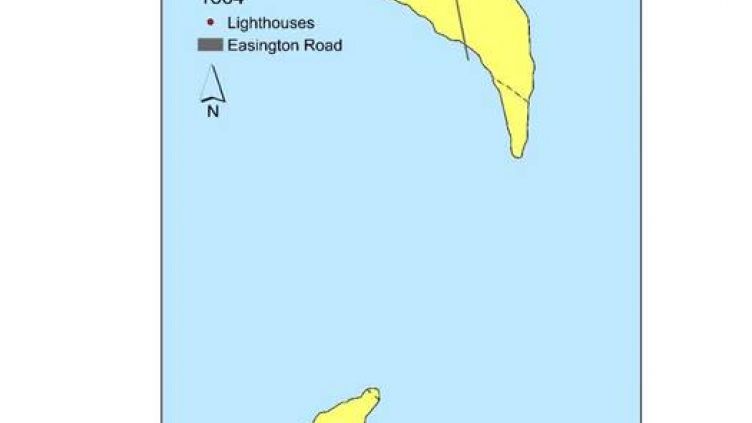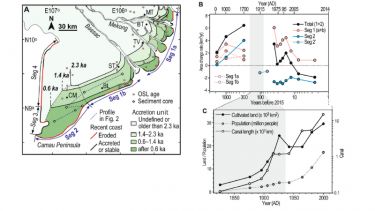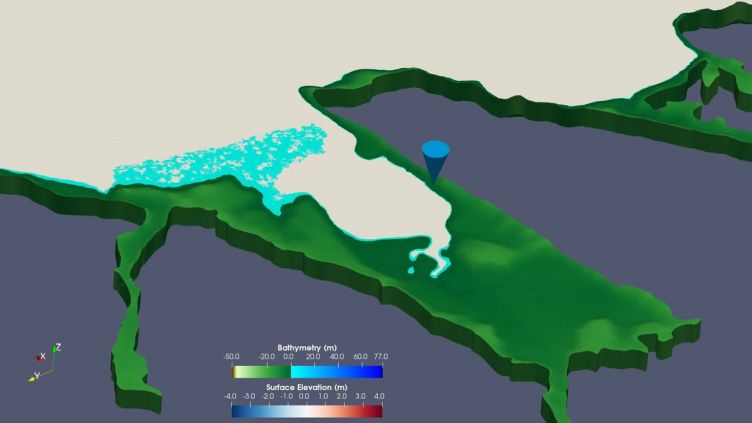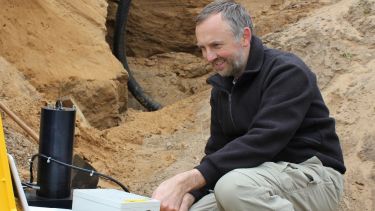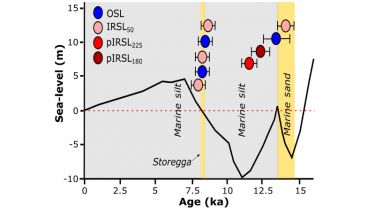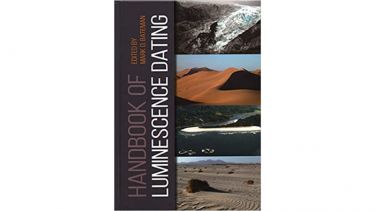Professor Mark Bateman
School of Geography and Planning
Professor in Palaeoenvironmental Reconstruction


+44 114 222 7929
Full contact details
School of Geography and Planning
Geography and Planning Building
Winter Street
91Ö±˛Ą
S3 7ND
- Profile
-
Mark Bateman received a First Class BSc in Geography from the University of London in 1991 and a DPhil from Sussex University in 1995 for his research on dating UK coversands. In 1995 he joined the 91Ö±˛Ą Geography department as a post-doctoral research assistant to set up and run the luminescence laboratory for the 91Ö±˛Ą Centre for International Drylands Research.
In 1998, Mark Bateman was appointed Lecturer in Physical Geography, promoted to Senior Lecturer (2004), Reader in Palaeoenvironmental Reconstruction (2006), and became a Professor in 2011. In 2018 he was awarded the Sorby medal by the Yorkshire Geological Society for his contribution to Yorkshire Geology.
- Qualifications
-
- BSc in Geography
- DPhil in Geography
- Senior Fellow of the Higher Education Academy
- Research interests
-
Society faces a Climate Crisis with a number of challenges including rising sea-levels, melting ice, desertification and increased storminess. My research aims to make a contribution towards understanding these changes by understanding the causes and magnitude of past environmental changes. It focuses on Sandscapes as an archive for understanding past depositional processes and environmental changes which have shaped the landscape we live in. Three themes are centred around this:
- Past glacial and periglacial landscapes
- Past aeolian activity in deserts and on coasts
- Advances in Luminescence dating of sediments
- The wider past environments in which our human predecessors were living
- Publications
-
Journal articles
- . Geomorphology, 463, 109349-109349.


- . Quaternary Geochronology, 83, 101580-101580.


- . Quaternary Geochronology, 82, 101542-101542.


- . Earth Surface Processes and Landforms.


- . Quaternary Science Advances, 12, 100119-100119.


- . Quaternary Science Reviews, 299, 107882-107882.


- . Quaternary Science Reviews, 296.


- . Royal Society Open Science, 9(6).


- . Quaternary Geochronology.


- . Quaternary Geochronology, 70.


- . Quaternary International.


- . Quaternary International.


- . Netherlands Journal of Geosciences, 100.


- . Boreas.


- . Journal of Quaternary Science.


- . Journal of Quaternary Science.


- . Palaeogeography, Palaeoclimatology, Palaeoecology, 569.


- . Journal of Quaternary Science.


- . Journal of Quaternary Science.


- . Scientific Reports, 11(1).


- . Aeolian Research, 47, 100628-100628.


- . Journal of Archaeological Science: Reports, 34, 102658-102658.


- Farndon fields, newark, Nottinghamshire: Windermere interstadial deposits with potential for late upper palaeolithic human activity. Mercian Geologist, 20, 5-14.


- . Earth Surface Processes and Landforms.


- . Quaternary Science Reviews, 242, 106414-106414.


- . Geomorphology, 370, 107371-107371.


- . Journal of Quaternary Science.


- . Journal of Arid Environments, 178.


- . Scientific Reports, 10(1).


- . Journal of Quaternary Science.


- . Australian Archaeology, 85(2), 115-125.


- . Royal Society Open Science, 6(7).


- . The Holocene.


- . Earth Surface Processes and Landforms, 44(6), 1233-1258.


- . HardwareX, 5.


- . Geomorphology, 329, 17-31.


- . Journal of the Earth and Space Physics, 45(2), 299-312.


- . Marine Geology, 407, 1-15.


- . Geomorphology, 327, 629-633.


- . Quaternary Geochronology, 49, 108-114.


- . Geomorphology, 323, 123-134.


- . South African Journal of Geology, 121(4), 421-430.


- . Proceedings of the Geologists Association.


- . Quaternary Science Reviews, 198, 181-207.


- . Earth Surface Processes and Landforms.


- . Journal of Quaternary Science.


- . Marine Geology, 403, 262-270.


- . Geomorphology, 310, 84-101.


- . Geomorphology, 306, 90-101.


- . Quaternary Geochronology.


- . Global and Planetary Change, 162, 84-100.


- . Palaeogeography, Palaeoclimatology, Palaeoecology, 490, 546-562.


- . Earth Surface Processes and Landforms.


- . Boreas.


- . Boreas.


- . Permafrost and Periglacial Processes.


- . Proceedings of the Geologists' Association, 128(2), 296-297.


- . Journal of Quaternary Science, 32(2), 295-310.


- . Journal of Archaeological Science: Reports, 11, 639-646.


- . Journal of Quaternary Science, 32(1), 48-62.


- . Earth-Science Reviews, 164, 232-250.


- The 'Lindholme Advance' and the extent of the Last Glacial Maximum in the Vale of York. Mercian Geologist, 19(1), 18-25.


- . Quaternary International, 404, 212-212.


- . Quaternary International, 404, 136-149.


- . Permafrost and Periglacial Processes, 27(1), 3-5.


- . Quaternary International, 397, 147-158.


- . Boreas, 45(1), 133-151.


- . Proceedings of the Geologists' Association, 126(6), 712-730.


- . Journal of Quaternary Science, 30(8), 870-885.


- . Quaternary Geochronology, 30, 141-146.


- . Quaternary Science Reviews, 124, 84-105.


- . Permafrost and Periglacial Processes, 26(3), 208-288.


- . Quaternary Science Reviews, 112, 86-108.


- . Quaternary Geochronology, 30, 134-140.


- . Quaternary Research, 84(1), 69-81.


- . The Holocene, 24(12), 1719-1730.


- . Quaternary Science Reviews, 99, 210-223.


- . Transactions of the Royal Society of South Africa, 69(3), 151-156.


- . Journal of Quaternary Science, 29(4), 301-317.


- . Insect Conservation and Diversity, 7(1), 64-72.


- The aeolian sand record in the Trent valley. Mercian Geologist, 18(2), 108-118.


- . Journal of Archaeological Science, 40(5), 2274-2285.


- . BOREAS, 42(2), 257-258.


- , 8, 416-429.


- . Quaternary Geochronology, 10, 230-236.


- . GEOLOGY, 40(4), 303-306.


- . Marine Geology, 326-328, 140-153.


- . Geomorphology, 161-162, 93-109.


- . Land Degradation and Development, 23(6), 601-610.


- . Geophysical Journal International, 189(1), 6-18.


- . Marine Geology, 307-310, 111-116.


- . Sedimentology, 59(3), 917-938.


- Building of shore-oblique transverse dune ridges revealed by ground-penetrating radar and optical dating over the last 500 years on Tottori coast, Japan Sea. Geomorphology.


- Coastal barrier dune construction during sea-level highstands in MIS 3 and 5a on Tottori coast-line, Japan. Palaeogeography, Palaeoclimatology, Palaeoecology.


- Regional and global context of the Late Cenozoic Langebaanweg (LBW) palaeontological site: West Coast of South Africa. Earth-Science Reviews.


- . Journal of Quaternary Science.


- Re-evaluation of the Last Glacial Maximum typesite at Dimlington, UK. Boreas.


- Dating inset terraces and offset fans along the Dehshir Fault (Iran) combining cosmogenic and OSL methods. Geophysical Journal International.


- . Quaternary Science Reviews, 30(1-2), 63-81.


- . GEOARCHAEOLOGY, 25(6), 671-674.


- . J QUATERNARY SCI, 25(6), 889-902.


- . J ARCHAEOL SCI, 37(6), 1207-1213.


- . NATURE, 464(7289), 740-743.


- . QUATERNARY RES, 73(2), 351-363.


- . South African Journal of Geology, 113(3), 241-256.


- . Terra Nova, 22(6), 417-423.


- . Palaeogeography, Palaeoclimatology, Palaeoecology, 297(3-4), 707-716.


- . Aeolian Research, 1(3-4), 111-127.


- . Aeolian Research, 2(2-3), 93-104.


- . TERRA NOVA, 21(6), 417-426.


- . J QUATERNARY SCI, 24(8), 916-927.


- . GEOPHYS J INT, 179(2), 700-710.


- . J QUATERNARY SCI, 24(2), 198-207.


- . PALAEOGEOGR PALAEOCL, 271(1-2), 24-38.


- . HOLOCENE, 18(8), 1193-1205.


- . GEOARCHAEOLOGY, 23(6), 715-741.


- . J ARCHAEOL SCI, 35(7), 1854-1866.


- . QUAT GEOCHRONOL, 3(1-2), 137-142.


- . PALAEOGEOGR PALAEOCL, 257(3), 261-279.


- . BOREAS, 37(4), 574-588.


- . BOREAS, 37(2), 195-210.


- Age-estimate evidence for Middle-Late Pleistocene aggradation of River Nene 1st Terrace deposits at Whittlesey, eastern England. P GEOLOGIST ASSOC, 118, 283-300.


- . S AFR J GEOL, 110(1), 125-136.


- Global environments through the quaternary. GEOGRAPHY, 92, 165-165.


- . PERMAFROST PERIGLAC, 18(1), 33-47.


- . QUATERNARY SCI REV, 25(19-20), 2552-2568.


- . PALAEOGEOGR PALAEOCL, 239(1-2), 147-165.


- . QUATERNARY RES, 65(2), 252-263.


- Provenance and chronology of the Barcavecchia Tufa, Southwest Etna, Sicily. BOLL SOC GEOL ITAL, 125(3), 265-272.


- . SEDIMENTOLOGY, 52(6), 1397-1423.


- . South African Geographical Journal, 87(1), 73-79.


- . BOREAS, 33(4), 359-375.


- . HOLOCENE, 14(4), 579-588.


- . QUATERNARY SCI REV, 23(14-15), 1681-1698.


- . HOLOCENE, 14(3), 406-416.


- . PERMAFROST PERIGLAC, 14(3), 217-246.


- . PALAEOGEOGR PALAEOCL, 191(2), 221-242.


- . International Journal of Remote Sensing, 23(15), 3091-3106.


- . Journal of Arid Environments, 50(3), 523-524.


- Holocene geochronology of a continental-shelf mudbelt off southwestern Africa. HOLOCENE, 12(1), 59-67.


- Environmental conditions and paleowind directions at the end of the Weichselian Late Pleniglacial recorded in aeolian sediments and geomorphology (Twente, Eastern Netherlands). GEOL MIJNBOUW-N J G, 80(2), 1-18.


- Luminescence chronology of river adjustment and incision of Quaternary sediments in the alluvial plain of the Sabarmati River, north Gujarat, India. GEOMORPHOLOGY, 36(3-4), 217-229.


- Dune activity as a record of late Quaternary aridity in the Northern Kalahari: new evidence from northern Namibia interpreted in the context of regional arid and humid chronologies. PALAEOGEOGR PALAEOCL, 156(3-4), 243-259.


- Late Devensian and Holocene depositional environments associated with the coversand around Caistor, north Lincolnshire, UK. BOREAS, 29(1), 1-15.


- Evidence of Late Devensian and early Flandrian processes and environments in the Idle Valley at Tiln, North Nottinghamshire. P YORKS GEOL SOC, 52, 383-393.


- Sedimentology, palaeoecology and geochronology of Last Interglacial deposits from Deeping St James, Lincolnshire, England. J QUATERNARY SCI, 14(5), 411-436.


- The timing of last-glacial periglacial and aeolian events, Twente, eastern Netherlands. J QUATERNARY SCI, 14(3), 277-283.


- Thermoluminescence dates and palaeoenvironmental information of the late Quaternary sand deposits, Tierra de Pinares, Central Spain. CATENA, 34(3-4), 277-291.


- Orange River alluvial terraces: is luminescence dating a useful teal?. S AFR J SCI, 95(2), 57-58.


- Late Quaternary dunes at Twigmoor Woods, Lincolnshire, UK: A preliminary investigation. Zeitschrift fur Geomorphologie, Supplementband, 116, 131-146.


- The origin and age of coversand in north Lincolnshire, UK. PERMAFROST PERIGLAC, 9(4), 313-325.


- Reconstructing quaternary environments, 2nd edition. APPL GEOGR, 18(2), 193-193.


- Museums: A palliative or solution for declining historical mines?. EPISODES, 21(1), 32-36.


- Development and environmental significance of an eolian sand ramp of last-glacial age, central Iran. QUATERNARY RES, 48(2), 155-161.


- The dating of linear banks found at Tiln, North Northamptonshire, using thermoluminescence. East Midland Geographer, 20(1-2), 42-49.


- An absolute chronology for the raised beach and associated deposits at Sewerby, East Yorkshire, England. J QUATERNARY SCI, 11(5), 389-395.


- . The Holocene, 5(2), 209-215.


- . Ichnos, 1-17.


- . Nature Ecology & Evolution.


- . Boreas.


- . Journal of Quaternary Science.


- .


- . Proceedings of the Yorkshire Geological
Society, pygs2020-019.


Chapters
- , Handbook of Pleistocene Archaeology of Africa (pp. 1431-1450). Springer International Publishing


- In Shennan I, Long AJ & Horton BP (Ed.), Handbook of Sea-Level Research (pp. 404-417). Chichester: John Wiley & Sons, Ltd..


- , Treatise on Geomorphology (pp. 556-568). Elsevier


- , Treatise on Geomorphology: Volume 1-14 (pp. 416-429).


- , Quaternary Environmental Change in Southern Africa (pp. 203-218). Cambridge University Press


Conference proceedings papers
- Late Wisconsin glaciation of Hadwen and Summer islands, Tuktoyaktuk Coastlands, NWT, Canada. GeoQuebec 2015 (pp 1-6), 20 September 2015 - 23 September 2015.


- . QUATERNARY GEOCHRONOLOGY, Vol. 5(2-3) (pp 250-256)


- . QUATERNARY GEOCHRONOLOGY, Vol. 5(2-3) (pp 286-292)


- . SEDIMENTARY GEOLOGY, Vol. 195(1-2) (pp 5-19)


- . QUATERNARY GEOCHRONOLOGY, Vol. 2(1-4) (pp 110-116)


- . QUATERNARY GEOCHRONOLOGY, Vol. 2(1-4) (pp 45-50)


- . Quaternary Geochronology, Vol. 2(1-4) (pp 57-64)


- . QUATERNARY SCIENCE REVIEWS, Vol. 22(10-13) (pp 1169-1176)


- . Quaternary International, Vol. 104(1) (pp 53-67)


- . QUATERNARY INTERNATIONAL, Vol. 111 (pp 37-49)


- . QUATERNARY INTERNATIONAL, Vol. 111 (pp 23-35)


- Evidence for eolian deposition in the sandy uplands of east texas and the implications for archaeological site integrity. GEOARCHAEOLOGY-AN INTERNATIONAL JOURNAL, Vol. 17(2) (pp 191-217)


- Geomorphic evidence for late Quaternary environmental change from the eastern Great Karoo margin, South Africa. QUATERNARY INTERNATIONAL, Vol. 89 (pp 151-164)


- Luminescence dating of loess-palaeosol sequences and coversands: methodological aspects and palaeoclimatic implications. EARTH-SCIENCE REVIEWS, Vol. 54(1-3) (pp 193-211)


- The timing and relation of aeolian sand deposition in central Spain to the aeolian sand record of NW Europe. QUATERNARY SCIENCE REVIEWS, Vol. 20(5-9) (pp 779-782)


- Palaeoclimate records from OIS 8.0-5.4 recorded in loess-palaeosol sequences on the Matmata Plateau, southern Tunisia, based on mineral magnetism and new luminescence dating. QUATERNARY INTERNATIONAL, Vol. 76-7 (pp 43-56)


- Thermoluminescence dating of the British coversand deposits. QUATERNARY SCIENCE REVIEWS, Vol. 14(7-8) (pp 791-798)


Other
- . Geomorphology, 463, 109349-109349.
- Teaching interests
-
The undergraduate and postgraduate teaching I specialise in relates to understanding past changes in climate and environment which have shaped the landscape we live in. I enjoy bringing across to my students how and why the fields of geomorphology, sedimentology and Quaternary Science are relevant to a wide range of geographical challenges we face.
My teaching interests reflect my research interests so I can keep students up-to-date on current developments. The style of my teaching varies from teaching out and about on field classes, in the laboratory and through lectures and small group tutorials. I have particular interests in former glacial and coastal environments and each year supervise students' projects in these areas.
- Professional activities and memberships
-
Editorial responsibilities
- Editor Board member for Boreas and Journal of Archaeological Science Reports and Associate Editor for Proceeding of the Yorkshire Geological Society. Former Editor of Special publications for the International Association of Sedimentologists (2014-2018) and former Editorial board member for Quaternary Science Reviews (2010-2014).
- Journal Reviewer for >40 International, peer-reviewed journals
Committee/panel activities
- NERC Peer-Review College (2012-).
- Bureau Member for International Association of Sedimentologists (2014-2018)
- Council Member of the British Society for Geomorphology (BSG: 2005-2008)
- Meeting Officer for Quaternary Research Association (QRA: 2002-2005)
- Secretary for the International Global Correlation Programme 413 (1998-2003)
External Examiner roles
- University of York (2025-
- Northumbria University (2023-2025)
- Queens University (2020-2024)
- University of Exeter (2014-2018)
- Sussex University (2012-2015)
- Queen Mary’s College London (2008-2012)
- 26 PhD Examinations (16 external and 11 internal) - including overseas
Invited Lectures and Visiting Positions
I have given 39 invited and keynote talks both in UK and internationally.
In 2019 I was an invited Visiting Fellow at University of Western Australia.
- Additional research projects
- Past periglacial and glacial environments
-
During much of the last 2.5 million years, NW Europe experienced cold glacial and non-glacial conditions which have shaped the landscape we live in and the sediments beneath our feet. From understanding how they were deposited and when we can understand key aspects of past climates, how they changed and how quickly they changed. For example my work has shown that erosion of dune systems in the McKenzie Delta (Arctic Canada) are tied to mega Lake Aggassiz outburst flood (USA) which may have caused the Younger Dryas hemispheric cooling event (Murton et al. 2010, Nature).
Possible route of outburst floods from pro-glacial Lake Aggassiz. Work in McKenzie Delta showed for the first time evidence for the Northern route at just before the start of the Younger Dryas (Murton et al 2010).
Work on the last icesheet to cover Britain has been able to reconstruct ice thickness and show that different parts of it advanced and retreated at different times. Ice in the North sea reached its maximum limits very late within the glacial stage and was dynamic, ponding up significant pro-glacial Lakes Humber and Pickering (Bateman et al 2018). More recent work has been trying to date the previous icesheet to cover Britain around 160,000 years ago (Fairburn and Bateman 2021). Over 40 publications have come from this work so far with past funding from NERC, QRA, BSG and Royal Society.
A series of time slices showing the advance, dynamics and retreat of the Vale of York and North sea icelobes of the last British and Irish Icesheet and the resulting proglacials lakes of Lake Humber and Lake Pickering (Eddey et al 2022).
Key outcomes
- Erosion of dune systems in the McKenzie Delta have been dated and tied to Lake Aggassiz outburst floods which may have caused the Younger Dryas event
- The Northsea icelobe of the last British and Irish Icesheet was dynamic and advanced to its maximum only 24000 years ago
- Evidence exists for the previous icesheet which covered Britain 160000 years ago.
Recent papers
-
Clark, C.D., Ely, J.C., Hindmarsh, R.C.A, Bradley, S., Igneczi, A., Fabel, D., Ă“ Cofaigh, C., Chiverrell, R.C., Scourse, J., Benetti, S., Bradwell, T., Evans, D.J.A., Roberts, D.H., Burke, M., Callard, L., Medialdea, A., Saher, M., Small, D., Smedley, R., Gasson, E., Gregoire, L., Gandy, N. , Ballantyne, C., Bateman, M.D., Bigg, G.R., Doole, J., Dove, D., Duller, G., Livingstone, S.L., McCarron, S., Moreton, S., Pollard, D., Sejrup, H-P., Van Landeghem, K., Wilson, P. and Praeg, D. (2022). Growth and retreat of the last British-Irish Ice Sheet, 31,000 to 15,000 years ago: the BRITICE-CHRONO reconstruction. Boreas 51, 699-758 DOI:.
-
Eddey, L., Bateman, M.D., Livingstone, S.J., Lee, J,R. (2022). New evidence for Glacial Lake Pickering, Yorkshire, UK. Journal of Quaternary Science 37 1407-1421.
- Evans, D.J.A., Robert, D.H., Bateman, M.D., Clark, C.D., Medialdea, A., Callard, L., Grimoldi, E., Chiverrell, R.C., Ely, J.C., Dove, D., Ă“ Cofaigh, C., Saher, M., Bradwell, T., Moreton, S.G., Fabel, D., Bradley, D. (2021). Retreat dynamics of the eastern sector of the British-Irish Ice Sheet during the last glaciation. Journal of Quaternary Science. Doi:
- Bateman, M.D., Evans, D.J.A., Roberts, D.H., Medialdea, A., Ely, E., Clark C.D. (2018). The timing and consequences of the blockage of the Humber Gap by the last British-Irish Ice Sheet. Boreas, 47, 41-61.
- Fairburn, W.A. and Bateman, M.D. (2021). Possible new evidence for a Mid-Pleistocene Glaciation in the Vale Of Pickering, North Yorkshire, U.K. Proceedings of the Geological Society of Yorkshire. Doi: .
- Understanding past aeolian activity
-
Part of my research has focussed on coastal dune systems which form a key landscape component in protecting coastal assets from coastal storms and rising sea levels. Understanding how they have developed through time and how they have been impacted by historic storms (and tsunami) will lead to a better understanding of coastal resilience as well as return intervals of impactful storms. This work has formed the basis of over 50 printed journal articles with past funding from Leverhulme Trust, National Geographic, QRA, BSG, White Rose and a NERC DTP award.
Recent work on Spurn Point has been able to show how it has evolved over the last 200 years and where it is must vulnerable to breaches by the North Sea (Bateman et al 2020).
How dunes and beach ridges on the Mekong Delta has helped understand when it developed and why 19th century canalisation and agriculture might be responsible for its current erosion.
On longer time scales work has been able to show how a tsunami 8200 years ago impacted on the coastline of eastern Scotland (Bateman et al 2021) and how coastal dunes from the Atacama Desert, Chile are able to show how fast this coastline is tectonically uplifting (Nash et al. 2018).
Key outcomes
- Coastal dunes show dynamic responses to climate changes in particular sediment supply from erosion, sea level changes and storms.
Recent papers
- Carr, A.S., Hay, A.S., Bateman, M.D., Livingstone, I., Powell, D.M. (2024). How old are the Mojave topographic dunes? The implications of new luminescence dating analyses from the Cady Mountains, Mojave Desert, southwest USA. Geomorphology 463, 109349. DOI:
- Tamura T., Nguyen V.P., Ta T.K.O., Bateman, M.D., Gugliotta M., Anthony, E.J., Saito, Y. (2020). Long-term sediment decline causes ongoing shrinkage of the Mekong megadelta, Vietnam. Nature Scientific Reports, 10, No. 8085 . DOI:
- Bateman, M.D., Kinnaird T.C., Hill, J., Ashurst, R.A., Mohan, J., Bateman, R.B.I., Robinson, R. (2021). Detailing the impact of the Storegga tsunami at Montrose, Scotland. Boreas.
- Bateman, M.D., McHale, K., Bayntun, H.J., Williams N. (2020). Understanding Historical Coastal Spit Evolution: a Case Study from Spurn, East Yorkshire, UK. Earth Surface Landforms and Processes 45, 3670-3686. DOI:
- Bateman, M.D., Rushby, G., Stein, S., Ashurst, R.A., Stevenson, D., Jones, J.M. and Gehrels, W.R. (2018). Can sand dunes be used to study historic storm events? Earth surface Processes and Landforms 43, 779-790.
- Advances in luminescence dating and applications
-
The time dimension is fundamental to understanding past change. Although vast advances in dating have been made, methods all require laboratory-based protocols that are not available during field sampling. It is now possible to make in field measurements of luminescence intensity which give a first order approximation for sediment age.
Research I have undertaken (funded by NATURAL ENGLAND, WHITE ROSE and RGS) has shown how portable luminescence can be used to understand phases of coastal dune building.
Following on from work to understand post-depositional processes on the sediment archive (Bateman et al . 2007), recently I developed an approach to used harder to reset luminescence signals (pIRSL180 and pIRSL225) to find the location of where sediment were eroded from. This was applied to Storegga tsunami deposits in Scotland which helped find the sediment source and therefore the direction of the wave that impacted the coastline (Bateman et al 2021).
In 2019 I edited together “The Handbook of Luminescence dating” in order to demystify the technique of luminescence dating for Quaternary geologists and archaeologists who require luminescence ages for their research.
Key Outcomes
It is possible to rapidly generate accurate, high resolution down core OSL data using a portable OSL reader to enable differentiation of older from the younger sediments, identify phases of sedimentation and temporal hiatuses. Luminescence can provide information on both post-depositional disturbance and be used to locate sediment sources.Recent papers
-
Rex, C.L., Bateman, M.D., Buckland, P.C., Panagiotakopulu, E., Livingstone S.J., Hardiman, M., Eddey, L. (2023). A revision of the British Chronostratigraphy within the Last Glacial-Interglacial Cycle based on new evidence from Arclid, Cheshire UK. Quaternary Science Reviews 299, 107882. DOI:
-
Stone, A., Bateman, M.D., Sanderson, D., Burrough, S.L.,Cutts, R., Cresswell, A. (2024). Probing sediment burial age, provenance and geomorphic processes in dryland dunes and lake shorelines using portable luminescence data. Quaternary Geochronology 82,101542. DOI:
- Bateman, M.D., Rushby, G., Stein, S., Ashurst, R.A., Stevenson, D., Jones, J.M. and Gehrels, W.R. (2018). Can sand dunes be used to study historic storm events? Earth surface Processes and Landforms 43, 779-790.
- Bateman, M.D., Kinnaird T.C., Hill, J., Ashurst, R.A., Mohan, J., Bateman, R.B.I., Robinson, R. (2021). Detailing the impact of the Storegga tsunami at Montrose, Scotland. Boreas.
- Bateman, M.D. (2019). Handbook of luminescence dating. Whittles Publishing, p416.
-
- Past Environmental Change and our predecessors
-
As our climates and environments have changed in the past so this has affected where ancient people lived and what resources they had available to them. My work has shown humans were living in coastal dune fields on the South African coast for over 100,000 years. These dunes provided a range of ecosystems and animals to hunt based on preserved animal trackways (Helm et al 2023). Thery also, through lithification, are instrumental in some (cave) shelter formation occupied by humans and dunes have been key in preserving some of the cave archaeological records found there. In West Africa research I have contributed to has shown our early ancestors were also living in tropical rainforests as long ago as 150,000 years (Ben Arous et al 2025). We have also shown that the Middle Stone extended from this time into the Holocene in places despite more modern lithic technologies being prevalent elsewhere by then (Scerri et al 2021). My work using single grain luminescence has also helped understand the impacts through time of bioturbation on sandy sediments and the archaeological sites found within them.
Key outcomes
We have a better understanding of archaeological site integrity in sandy sediments Our predecessor lived in Tropical Rain Forests and coastal dune systems as far back as 150,000 years ago.Recent papers
- Ben Arous E., Blinkhorn J. A., Elliott, S., Kiahtipes, C., N’zi, C.D., Bateman M.D., Duval M., Roberts, P., Palalano, R., Blackwood, A., Niang K.,Kouamé, E.A., Lbato, E., Hallett, E., Cerasoni, J.N., Scott, E., Ilgner, J., Escaraza, M.J.A., Guedé, F.Y., Scerri E.M.L. (2025). Humans in Africa’s wet tropical forests 150 thousand years ago. Nature (in press)
- Helm, C.W., Bateman, M.D., Carr, A.S., Cawthra, H.C., De Vynck, J.C., Dixon, M.G. Locklye, M.G., Steer, W., Venter, J.A. (2023). Pleistocene fossil snake traces on South Africa’s Cape south coast. Ichnos 30, 98-114. Doi:
- Niang, K., Blinkhorn, J., Bateman, M.D., Kiahtipes, C.A. (2023). Longstanding behavioural stability in West Africa extends to the Middle Pleistocene at Bargny, coastal Senegal. Nature Ecology & Evolution 7, 1141-1151. Doi:
- Scerri, E.M.L., Niang, K., Candy, I., Blinkhorn, J., Mills, W., Cerasoni, J.N., Bateman, M.D., Crowther, A., Groucutt, H.S. (2021) Continuity of the Middle Stone Age into the Holocene. Nature Scientific Reports 11, 70. Doi:



